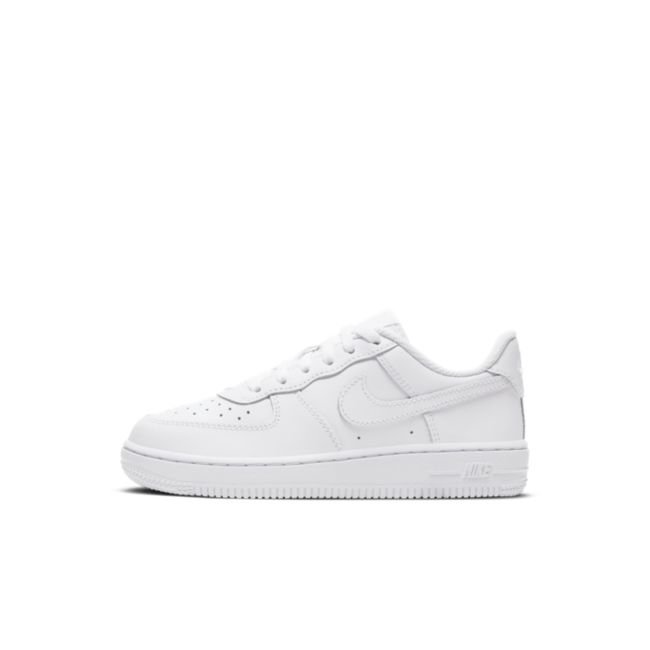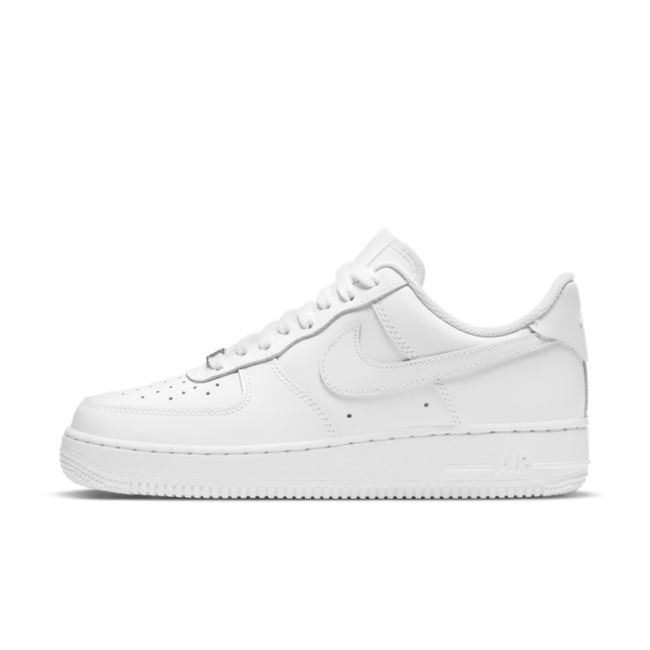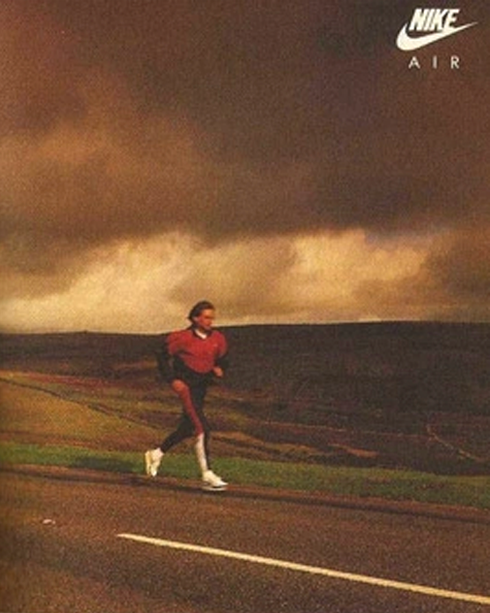Nike
Air Force 1
A story of an icon.
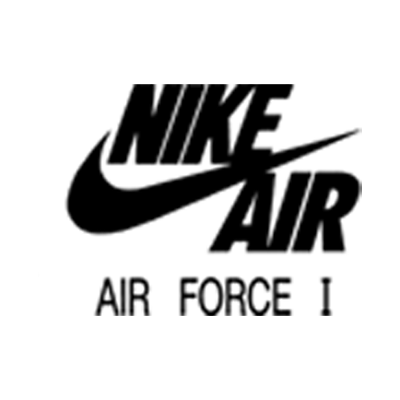

An illustrious name
At the beginning of the 1980s, Nike was well known for its running expertise but was relatively small within the basketball scene. Wanting to address this, the brand began work on a model that was to be called the Nike Air Force 1 after the famous American presidential aircraft. This lofty name would turn out to be an auspicious choice since the design would eventually become as well-recognised around the globe as its namesake.

Air cushioning in a basketball shoe
In the Air Force 1, Nike wanted to create a different type of shoe, one built for explosive jumping and rapid movements which also had the cushioning to soften heavy landings. At the end of the previous decade, Air sole technology had been introduced for the first time, and Nike knew that if this groundbreaking innovation could be transitioned to a basketball shoe, it would have a profound effect on the quality of the design. Not only was it capable of providing the kind of stable, supportive base that basketball players needed, it was also an instantly recognisable symbol of Nike’s creativity and dedication to producing the best footwear.

A visionary designer
Transitioning the Air sole unit to a basketball trainer would require plenty of ingenuity, and it proved to be a tough challenge. Two years after the beginning of the venture, the design team had still not succeeded in producing an Air basketball shoe. It was then that Nike decided to appoint visionary designer Bruce Kilgore to take up the mantle of leading the project. Having already established himself as an all-American product designer with a distinguished career, he was the ideal person to work on the Nike Air Force 1.
Expert advice
To craft a high-quality basketball shoe, Kilgore knew he would have to put function ahead of form to meet the players’ particular performance requirements. Nike has a history of bringing in experts from various fields to achieve such functional innovation, and this time was no different. Kilgore consulted with podiatrists and other experts to assist on the project, and eventually they came up with a brand new Air cushioning unit that was specific to the AF1.
A performance design
With the all-important sole unit in place, the team switched their focus to other utilitarian aspects of the design. Kilgore drew inspiration from the Nike Approach, a sturdy hiking boot whose lower heel curved up and in towards the Achilles tendon. This feature was brought across to the Air Force 1 to provide flexibility without compromising on strength, while a proprioceptive strap further bolstered the ankle protection. Players’ traction needs were also met through a series of specialised circular structures on the rubber outsole that enabled them to change direction with unrivalled speed.
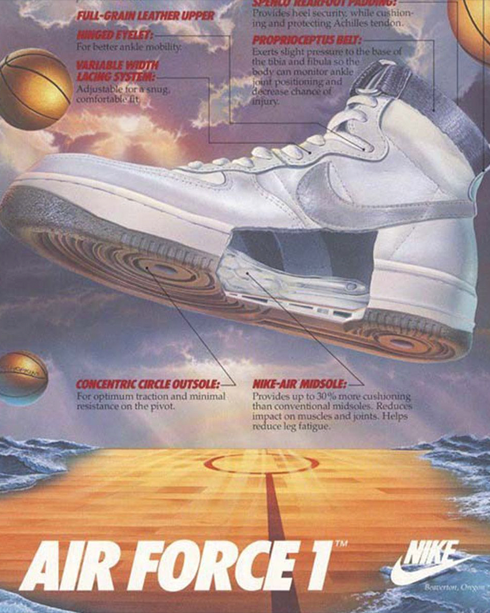
An unexpected source of inspiration
Kilgore’s design was inspired by architecture as well. The floorplan of Paris’ Notre Dame cathedral informed the lugged appearance of the durable cupsole – itself something rarely seen on the basketball shoes of the time – which balanced out the extra height provided by the Air cushioning in the sole. These varied influences were backed up by cleverly thought out elements such as a variable width lacing system that pulled the upper tighter into the foot for a close fit and great control. All in all, Bruce’s finished product fused his minimalist design ethos with Nike’s technological might to produce an innovative, stylish shoe that introduced Nike Air into the sport of basketball for the first time when it was released in 1982.
Creating an iconic image
To bring more attention to its new design, Nike enlisted some of the NBA's top players to create an iconic image. In it, basketball stars Moses Malone, Mychal Thompson, Michael Cooper, Calvin Natt, Jamaal Wilkes and Bobby Jones were pictured standing on tarmac in front of the silhouette of a plane set against a rich orange background of the rising sun. All of them were wearing white Nike flight suits and, of course, the Nike Air Force 1 in its original white colourway with grey details on the swoosh and outsole. Before long, other highly regarded NBA players had begun to wear the Air Force 1. Then, in 1983, the AF1 Low was introduced, providing a different option for those who preferred a low ankle and bringing wider appeal to the model.

The groundbreaking shoe returns
As well as delivering an enhanced basketball shoe, the Nike Air Force 1 established several important phenomena in sneaker culture. It made history in becoming the first Nike collection to be reintroduced as a retro design – something now common amongst modern sneaker brands. This came about due to the popularity of the AF1, which had taken hold in certain areas of the United States in the first two years after its release. In 1984, when there was a real possibility that the Air Force 1 would be discontinued, the East Coast fans, particularly those in Baltimore, Philadelphia and New York, whose youth had nicknamed them “Uptowns”, called for more to be released. It was standard practice for shoes to be dropped in favour of newer models at the time, but the stage had been set for the AF1’s extraordinary comeback in 1983, when three Baltimore-based shops had presented Nike with an imaginative idea. They suggested that unique versions be sold from their shops only, leading to another sneaker first – collaborations and limited run releases. Nike liked the idea, and the “Colour of the Month Club” initiative was born. The concept drew fans from all along the East Coast, who flocked to Charley Rudo, Downtown Locker Room and Cinderella Shoes to get their hands on the one-of-a-kind designs. Their passion was instrumental in reestablishing Nike’s enthusiasm for the model, with early reintroductions being pioneered in these stores and often selling out immediately. In 1986, barely two years after it had been pulled from the shelves, the Nike Air Force 1 made its full return.

A hip hop favourite
Following its reintroduction, the indefatigable Air Force 1 went from strength to strength, gradually becoming one of the world’s most adored sneakers. On top of its reputation as a comfortable basketball shoe, the impassioned work of the Baltimore scene had made it a desirable fashion item as well, and, through the 90s, the AF1 began to spread throughout different areas of American culture. This growth was helped by Nike’s introduction of special editions and premium versions in limited runs that made them perfect for collectors. The all-white colourway, released sometime during this decade, became particularly popular for its pristine exterior and intricate lines of stitching. Hip hop stars and labels began to embrace the model through artists like Jay-Z, who rapped about “all-white Air Force Ones” in a 1998 release. This trend continued into the early 2000s as hip hop label Roc-A-Fella Records was given its own white-on-white edition with its logo embroidered into the lateral heel. In 2002, rap artist Nelly even dedicated an entire song to the now illustrious sneaker, including a video in which he is seen flanked by Nike shoe boxes as he sings about the AF1. Later, towards the end of the noughties, Harlem-based artist ASAP Rocky demonstrated the power of celebrity and the hip hop scene in popularising Nike’s footwear as he raised the profile of the AF1 Mid – a silhouette which had struggled to achieve the same acclaim as its peers – by wearing it during his performances.

Celebrating an icon
By the time the Air Force 1 had reached its 25th anniversary in 2007, it was a global sensation. In honour of its incredible trajectory, Nike had big plans for the occasion, pulling together famous names from both the world of basketball and the music scene. In an homage to the original basketball poster, a similar image was drawn up, this time featuring ten star players, including two heavyweights of the era in LeBron James and Kobe Bryant. Once again, the players were arranged on a strip of tarmac, this time illuminated by bright lights which shone at their backs. And, of course, they all wore Nike Air Force 1s along with white branded clothing. Underneath, the words “The Second Coming” summed up the scene.

At the same time, Nike was working alongside monumental record producers Rick Rubin and DJ Premier to arrange musical celebrations for the AF1. They oversaw the production of a track entitled “Classic (Better Than I’ve Ever Been)”, which was performed by superstar artists Kanye West, KRS-One and Nas at the Nike Air Force 1 anniversary event on MTV2. Influential rapper Rakim was added to the star-studded group for the single’s remix track, which earned them a nomination for Best Rap Collaboration at the 2008 Grammy Awards.
Distinguished collaborations
These elaborate birthday celebrations demonstrated Nike’s dedication to the Air Force 1. Ten years later, on its 35th anniversary, the brand’s devotion was still as strong as ever. This time, its focus was on high-level collaborations with fashion designers and eminent players in the music business, indicating the AF1’s transition into the higher echelons of the fashion industry. Nike teamed up with streetwear designer Don C, rapper and record producer Travis Scott, entrepreneurial fashion designer Virgil Abloh, record executive and co-founder of Roc-A-Fella Records Kareem “Biggs” Burke, and inspirational designer Errolson Hugh, who each developed their own signature version of the model. Known as the Nike Air Force 1 AF100 Pack, it included AF1 Highs, AF1 Lows and even a Lunar Force 1 to showcase a whole range of prior Air Force 1 designs. Each one featured unique stylistic details, and the pack proved to be very popular. For some of the group, the partnerships it established led to further iconic collaborations, such as those involving Virgil Abloh’s luxury fashion label, Off-White™, and a host of much sought after models by Travis Scott, whose reverse swoosh has become a hallmark of his Nike designs.

An incredible landmark
Even more recently, the Nike Air Force 1 reached its 40th anniversary. This time, the brand highlighted four progressive collectives from around the world with the launch of the Join Forces Pack. These diverse groups were chosen for their expressive style along with their work to empower local communities. They included an all-female collective based in LA, a Japanese dance crew, a dance academy in Johannesburg and a community dance group in Memphis. While the celebration honoured the unique design aspects which had made the AF1 so popular in the past, with over 1700 different iterations to its name, the main focus was on the future of the model and the generations that would take it forward.

A historic shoe
Throughout its lifetime, the Air Force 1 has featured Nike’s greatest materials and technologies, ultimately establishing itself as a mainstay of street culture. The brand used the power of partnerships and collaborations to take the sneaker to an even more astronomical level of popularity, which it still retains to this day. With such an esteemed history, the Nike Air Force 1 has rightfully become known as one of the most iconic shoes of all time.
